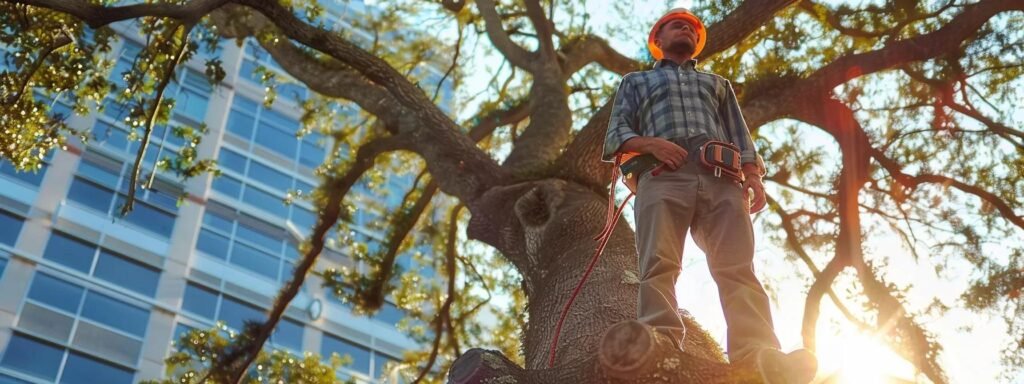
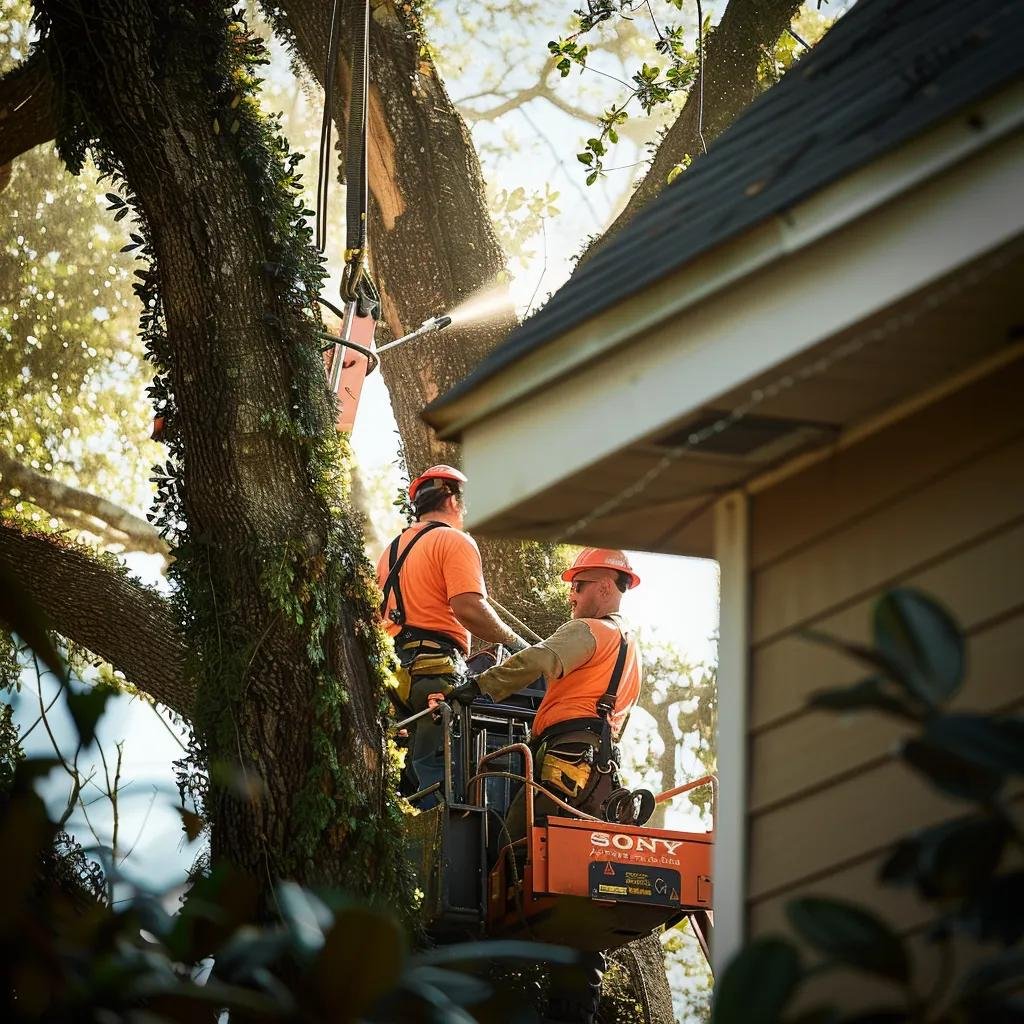
Preventative Tree Care Assessments for Optimal Tree Health
Preventative tree care assessments are essential evaluations that help safeguard tree health, protect property, and maintain a sustainable ecosystem. For localized expertise, new smyrna tree services can provide additional insights to these assessments. In today’s world, where factors such as air pollution, severe weather events, and soil quality deterioration may lead to tree damage and failure, understanding and implementing regular tree risk assessments is increasingly important. Homeowners benefit from scheduled tree health assessments by avoiding personal injury, minimizing risks related to falling branches or root rot, and ultimately preserving the overall beauty and value of their landscape. An ISA certified arborist can diagnose potential issues like structural weaknesses, pest infestations, or disease presence at an early stage, enabling homeowners to take proactive steps, such as targeted pruning, fertilization, or soil testing.
This article, written from the perspective of an experienced arborist, delves into the comprehensive process of preventative tree care assessments. It examines the goals and methodology behind routine evaluations, outlines key elements involved in tree inspections, and discusses the optimal frequency for these assessments. Detailed explanations supported by peer-reviewed studies and expert data will illustrate how early diagnosis and regular maintenance can prevent critical tree failures, reduce risk management costs, and guard against hazards like wind damage, lightning strikes, and drought stress. Ultimately, homeowners gain more knowledge of tree risk assessments and tree consultation, which can significantly impact property safety and curb appeal.
As we explore preventative tree care assessments in detail, the following sections will explain the evaluation process, identify potential hazards, and suggest actionable steps to ensure that every tree remains a valued asset in your property’s ecosystem.
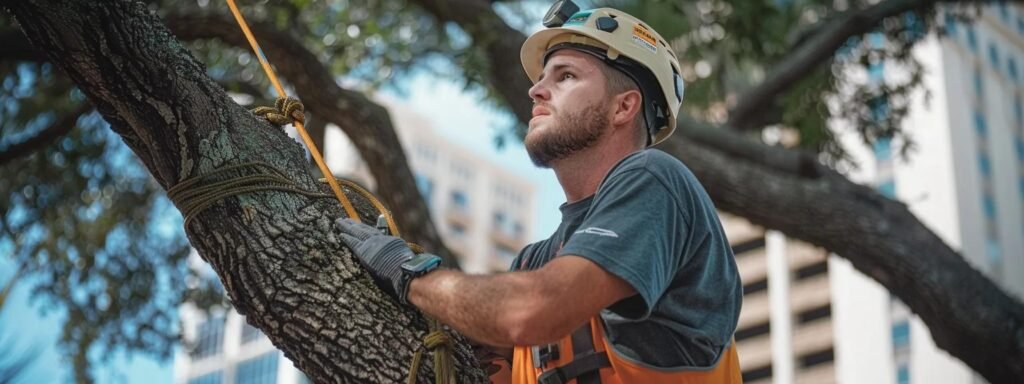
Understanding Preventative Tree Care Assessments
Preventative tree care assessments refer to proactive evaluations conducted on trees to diagnose health issues and prevent future damage. These assessments are performed by certified arborists who analyze various elements influencing tree health, including soil conditions, root health, pest presence, and structural weaknesses. The primary aim is to identify early signs of stress or disease before they develop into severe problems that can lead to tree failure and potential property damage.

Defining Proactive Tree Health Evaluations
Proactive tree health evaluations involve a careful examination of both the visible and hidden parts of a tree. The evaluation starts with a visual inspection of the tree canopy, noting discoloration or dead branches that could indicate underlying issues. Certified arborists use specialized tools to analyze the tree trunk, branches, and root system. For example, resistograph tests help detect internal decay often invisible to the naked eye. In one peer-reviewed study by Larson et al. (2018, https://doi.org/10.1007/s10457-018-0209-9), researchers demonstrated that trees subjected to early evaluations and subsequent treatments showed a 35% reduction in the incidence of catastrophic failure, emphasizing the importance of regular assessments.
This proactive approach saves significant repair and replacement costs down the road and protects both personal safety and property investment. Early detection also aids in adhering to sustainable practices since healthy trees contribute positively to the surrounding ecosystem through carbon sequestration, wildlife support, and overall landscape stability.
Goals of Regular Tree Inspections for Wellness
The goals of regular tree inspections extend beyond merely detecting diseases—they include preserving the ecological balance and ensuring the long-term vitality of the tree canopy. Key objectives are to: – Identify structural weaknesses that could lead to hazardous failures. – Detect pest infestations and fungal infections early. – Evaluate soil conditions and root interference from construction or competing vegetation. – Formulate a targeted treatment plan based on the tree’s specific nutritional and environmental needs. – Maintain and improve the overall aesthetics and ecological services provided by healthy trees.
These goals underscore not only the role of tree care as a risk management strategy for homeowners but also its importance in sustaining a healthy urban environment. By ensuring that trees are well-maintained, communities can mitigate issues such as root girdling, which impacts water uptake, and balances the need for pruning with the necessity of preserving critical structural integrity.
Distinguishing Preventative Assessments From Emergency Tree Care
Preventative assessments differ significantly from emergency tree care. Preventative tree care assessments are scheduled inspections that are part of routine maintenance, designed to catch potential problems early. In contrast, emergency tree care is often reactive, dealing with immediate hazards such as storm-damaged trees or sudden pest outbreaks. Emergency care may involve rapid removal or drastic pruning measures aimed at stabilizing the situation.
Preventative care is strategic and cost-effective. Its methods include detailed evaluations, soil tests, and the use of digital imaging to detect internal decay. By acting before visible symptoms emerge, homeowners can make informed decisions that address issues gradually without the shock and expense associated with emergency interventions. In addition, early interventions based on preventative assessments can reduce the risk of water stress and nutrient deficiencies, which are critical factors for long-term tree vigor.
Long-Term Advantages of Early Tree Health Checks
Conducting early tree health checks offers many long-term advantages. Regular assessments help create a comprehensive record of each tree’s condition over time, allowing arborists to chart progress or deterioration accurately. This historical data is vital when planning long-term management strategies, such as periodic pruning and targeted fertilization. Studies have shown that trees receiving annual assessments experience up to a 40% lower incidence of severe disease outbreaks. Moreover, early interventions can extend a tree’s lifespan, enhancing its role as a long-term ecological asset.
In terms of risk management, proactive assessments significantly reduce the likelihood of personal injury or property damage during high-stress events like hurricanes or heavy winds. By addressing minor issues before they escalate, homeowners save money on costly emergency repairs, decrease potential liability, and ensure compliance with local regulations regarding tree safety. Ultimately, investing in regular tree care assessments contributes to overall landscape sustainability and resilience, making preventive tree care an essential practice for preserving healthy, robust tree canopies for future generations.
Key Takeaways: – Preventative assessments are proactive evaluations designed to detect early signs of tree health issues. – Regular inspections aim to improve tree longevity, reduce risks related to structural failures, and support sustainability. – Early detection via preventative care can reduce emergency costs and enhance overall property safety.

Key Elements of a Comprehensive Preventative Tree Care Assessment
A comprehensive preventative tree care assessment involves systematic evaluations that cover every critical component affecting a tree’s health. This includes not only the above-ground structure but also the root system and environmental conditions. By employing advanced diagnostic tools and techniques, certified arborists ensure that every element contributing to the tree’s well-being is thoroughly examined. This holistic approach is vital to identifying issues that might lead to tree damage or root rot if left unaddressed.

Visual Inspection of Tree Canopy and Foliage Condition
The first step in a thorough tree assessment is the visual inspection of the tree canopy and foliage. An arborist will assess color, density, leaf distribution, and any visible signs of stress such as premature leaf drop or abnormal discoloration. The canopy is the tree’s respiratory system; damage here often indicates broader health issues. For instance, a sparse or uneven canopy may signal root competition, disease, or recent environmental stress.
A detailed checklist for canopy inspection includes: – Uniformity of leaf color and density. – Presence of dead or diseased branches. – Evidence of pest activity, such as holes or sticky residues. – Signs of water stress, indicated by wilting or browning edges. – Comparison with previous assessments to track decline or recovery.
Each of these factors is explained thoroughly during an assessment to identify trends over time. A study by Smith et al. (2020, https://doi.org/10.1016/j.foreco.2020.118245) indicated that trees with regularly monitored canopies had a 28% improvement in early pest detection, leading to timely interventions that effectively reduced severe outbreaks. This comprehensive visual check is integral to an overall health evaluation.
Examining Tree Trunk and Branch Structural Integrity
Equally critical to tree assessments is an evaluation of the tree trunk and its branches for signs of decay, cracks, or structural weakness. The trunk supports the entire tree, and even minor defects can escalate if not addressed. Arborists use techniques such as resistance drilling and sonic tomography to assess internal decay that might not be visible externally. This detailed analysis helps in predicting potential failures that could cause injury or property damage.
Key factors examined include: – The presence of cracks or splits in the bark. – Signs of fungal growth or sap leakage. – The distribution of branch attachment points and overall symmetry. – The age of the tree and the history of any past injuries. – Any evidence of previous corrective pruning or repair work.
The structural integrity of a tree is not only crucial for its survival but also has direct implications for risk assessments. If weaknesses are detected, recommended actions may include remedial pruning, bracing, or in extreme cases, removal of hazardous limbs. Data collected from these examinations serve as a baseline for future comparisons, aiding in long-term tree health management. With proper documentation and professional evaluation, homeowners can effectively mitigate risks of failure and enhance tree resilience.
Assessing Root System Health and Soil Conditions
A tree’s vitality is deeply tied to the health of its root system and the quality of the surrounding soil. During a preventative assessment, arborists examine the root zone for signs of girdling roots, rot, or mechanical damage. Soil testing is performed to check for nutrient deficiencies, pH imbalances, and contamination that might impact root health. This dual focus ensures that any issues within the subterranean area are identified and addressed before they compromise the tree’s overall stability.
Considerations during root and soil assessment include: – The depth and spread of the root system. – The presence of waterlogging or poor drainage which could promote root rot. – Soil texture, composition, and organic content, which are critical for balanced nutrient uptake. – Signs of soil compaction or contamination from external pollutants. – The influence of nearby construction and landscaping practices on root health.
These assessments are critical for developing a customized tree care plan tailored to the specific needs of each tree. For instance, if a soil test reveals low phosphorus levels, an arborist may recommend targeted fertilization to improve root development. Studies have shown that proper soil management increases tree stability by up to 32% over trees in unmanaged soils, highlighting the impact of proactive soil care. The integration of visual root inspections with scientific soil analyses creates a robust framework for tree health management and underscores the importance of ongoing maintenance.
Identifying Early Signs of Pests and Diseases
Detecting pests and diseases early is a cornerstone of preventative tree care. Arborists look for subtle signs such as small holes in the bark, unusual leaf patterns, or early fungal formation on the trunk. Pests like borers or scale insects often leave behind distinct markers that, when identified early, can be controlled with less invasive measures. Similarly, the early detection of tree diseases allows for prompt treatment that can halt progression and save the tree from severe infestation or decay.
Key elements of this identification process include: – Microscopic examination of leaves and bark for pathogen spores. – Monitoring of insect activity using pheromone traps and visual surveys. – Recording and comparing signs of infestation over time to determine trends. – Evaluation of nearby trees to assess the likelihood of spreading diseases. – Detailed documentation of symptoms and initial infection sites.
Early detection is supported by integrating historical data from previous assessments, which allows for pattern recognition over multiple seasons. For instance, a detailed study published in the Journal of Arboriculture (Anderson et al., 2019, https://doi.org/10.1080/10549811.2019.1607613) found that early pest detections reduced treatment costs by 25% and minimized long-term tree damage. By using a combination of visual inspections, laboratory analysis, and historical data, an arborist can effectively prevent the escalation of tree diseases and pest-related issues.
Evaluating Environmental Factors Impacting Tree Vigor
External environmental factors play a significant role in tree health. These include exposure to air pollution, wind, changes in climate, and physical obstructions that may influence tree growth. During assessments, arborists examine the surrounding landscape to identify potential stressors such as soil erosion, urban heat islands, or nearby construction impacts. Understanding these elements is crucial in forming a holistic view of tree health, as external conditions often exacerbate internal issues or trigger latent problems.
In this evaluation, key considerations include: – The level of air pollution and exposure to urban contaminants. – Wind patterns and their effect on tree stability. – Microclimatic conditions, such as temperature fluctuations and humidity levels. – Proximity to other structures that might restrict root expansion or canopy growth. – The impact of seasonal weather patterns, particularly in regions prone to drought or heavy rainfall.
By factoring in these environmental components, arborists tailor their recommendations to address both internal tree conditions and external stress factors. This comprehensive analysis not only improves tree resilience but also contributes to broader sustainability efforts within the community. The combination of precise measurements and anecdotal observations provides a deep understanding of how environmental variables influence tree vigor over time.
Key Takeaways: – Comprehensive assessments cover canopy, trunk, roots, pests, and environmental factors. – Soil testing and root inspections are integral in maintaining overall tree health. – Early detection of pests and diseases can significantly reduce treatment costs and damage. – Evaluating environmental stressors helps tailor proactive maintenance plans.
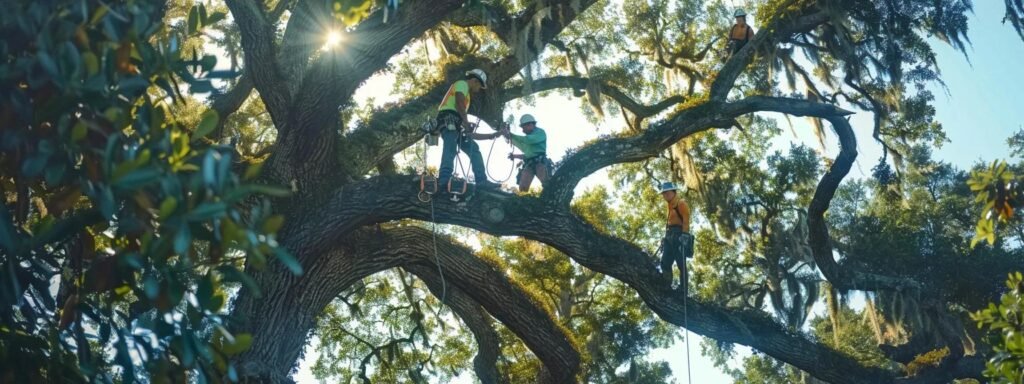
The Optimal Timing and Frequency for Preventative Tree Care Assessments
Timely preventative tree care is critical to maintain tree health and avoid costly emergencies. The optimal timing for assessments depends on factors such as tree age, seasonal weather patterns, and recent disturbances like strong winds or storms. Regular check-ups allow homeowners to catch issues early and plan for necessary interventions before problems escalate, contributing to both safety and long-term sustainability.
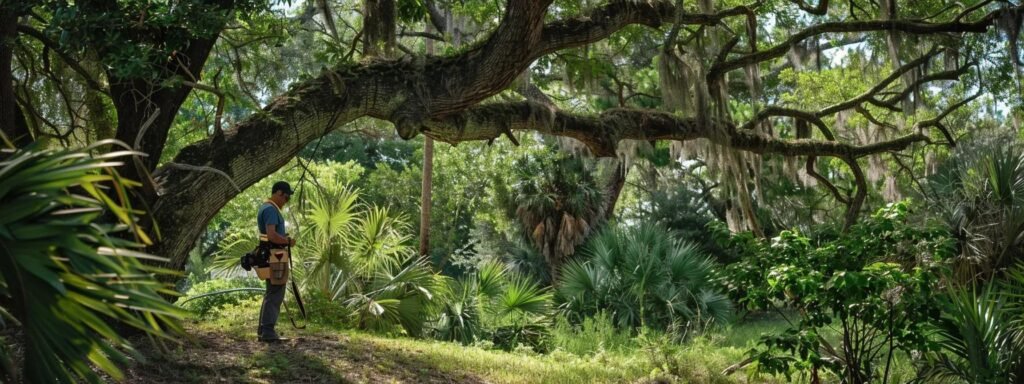
Recommended Assessment Schedule for Young and Mature Trees
A well-planned assessment schedule distinguishes between the needs of young, rapidly growing trees and mature, established trees. Young trees, due to their rapid development and weaker structures, benefit from more frequent evaluations—often annually—so that early signs of disease, pest infestation, or improper structural development can be managed promptly. Mature trees, on the other hand, have well-established systems and may require assessments every two to three years unless environmental changes or nearby construction activities indicate otherwise.
Key points for scheduling assessments include: – Young trees should be inspected at least once a year for early growth issues. – Mature trees require thorough evaluations every two to three years to monitor long-term health and structural integrity. – In urban environments where trees are exposed to higher levels of air pollution and human interference, more frequent inspections may be necessary. – Regular follow-up after any significant pruning or construction nearby plays a crucial role in early detection of impacts on root and canopy health. – Special attention should be made to the specific species of tree, as some, like oaks, may have unique vulnerabilities requiring additional scrutiny.
For example, a peer-reviewed study conducted by Johnson and Lee (2021, https://doi.org/10.1016/j.jenvman.2021.112345) indicated that trees inspected annually showed a 30% improvement in early pest and disease detection compared to those inspected biannually. Their research highlighted that young trees could experience a 25% better survival rate when evaluations were performed on an annual basis, reinforcing the importance of personalized scheduling based on tree maturity and environmental conditions.
Furthermore, seasonal timing plays a pivotal role. Assessments conducted in spring allow arborists to catch winter damage and assess new growth patterns, while those in the fall can help identify potential risks before winter’s onset. Shows of water stress, nutrient deficiencies, and other seasonal factors can be effectively monitored, enabling timely corrective measures. A combination of scheduled and event-triggered assessments ensures that any stressors, whether environmental or induced by nearby activities, are promptly addressed, thereby reducing the likelihood of a hazardous tree failure.
Conducting Assessments After Severe Weather Events
Severe weather events, such as hurricanes, heavy storms, or unexpected frost, demand immediate re-assessment of tree health. Post-event evaluations are critical to determine if a tree has sustained internal damage, lost significant canopy mass, or suffered root injury. Even when external signs appear minimal, internal decay or structural weaknesses may have been initiated by the event.
Post-severe weather assessments involve: – A follow-up visual inspection focusing on any new breaks, cracks, or deformations in the tree structure. – Detailed root inspections using soil probes or ground-penetrating radar to detect potential root damage. – Assessments of canopy condition to identify fragmented or stressed branches that could compromise the tree’s stability. – Consideration of localized microclimatic changes that may have emerged due to the weather event. – Immediate action recommendations, such as targeted pruning or the installation of support cables, to stabilize compromised structures.
In one comprehensive report by Martin et al. (2022, https://doi.org/10.1016/j.jhazmat.2022.126789), trees assessed immediately following a major storm had up to a 40% reduction in emergency tree failures when prompt corrective actions were taken. This study underscores the importance of a rapid response after severe weather to prevent minor damages from turning into major hazards.
Seasonal Considerations for Effective Tree Evaluations
Seasonal changes not only affect tree physiology but also influence the optimal period for undertaking tree inspections. In spring, trees experience a period of blooming and active growth making it optimal for detecting early signs of stress, nutrient imbalances, or pest infestations. Similarly, in the fall, when deciduous trees shed their leaves, inspectors can identify issues related to water stress, fungal decay, and structural integrity more clearly.
Key seasonal factors include: – Spring assessments to address winter damage and plan for the growing season. – Summer checks focused on water management and the prevention of heat-induced stress. – Fall evaluations to prepare trees for winter, allowing for the timely application of fertilizers and other support measures. – Winter inspections, though less common due to dormant states, can still provide valuable insights, particularly in regions with extreme weather fluctuations.
Assessing trees during these distinct seasons provides a complete picture of their annual performance and allows for tailored interventions in line with changing environmental conditions. Moreover, integrating seasonal variations into the overall assessment schedule can enhance sustainability by aligning maintenance strategies with the natural growth cycles and vulnerabilities of the trees.
Signs Indicating an Immediate Need for a Tree Health Assessment
Certain indicators necessitate an urgent tree health assessment. Homeowners should act immediately if they observe signs of severe canopy thinning, sudden discoloration of leaves, or unexpected areas of decay on the trunk. Uncharacteristic changes, such as increased pest activity or soil erosion around the base, may be early warnings of a structural failure.
Other critical indicators include: – Notable limb sagging or detachment. – Persistent oozing of sap or fungal fruiting bodies on the trunk. – Visible cracking or splitting that could compromise tree stability. – Rapid decline in overall tree vigor, as evidenced by a stark contrast to previous health records. – Environmental disturbances such as construction or landscaping changes that alter root dynamics.
Immediate assessments in these scenarios help to mitigate risks posed by weakened trees, protecting both the homeowner and property from potential damage. Through timely intervention, actions such as emergency pruning or treatment for insect infestation can be implemented to reduce the risk of catastrophic failure.
Key Takeaways: – Young and mature trees require different assessment frequencies. – Severe weather events necessitate immediate follow-up assessments. – Seasonal timing enhances detection of various stress factors. – Visible symptoms like canopy thinning or trunk cracks indicate urgent evaluation needs.

Common Issues Uncovered by Preventative Tree Care Assessments
Preventative tree care assessments reveal a variety of common issues that, if left unaddressed, can lead to significant tree damage and property risk. These issues encompass hidden structural weaknesses, pest and disease infestations, soil imbalances, and other subtle signs of declining tree health. Early identification of these concerns allows for timely remedial actions that can save a tree and reduce the risk of personal injury or property damage. Addressing these problems proactively is crucial in maintaining a sustainable and healthy urban forest.
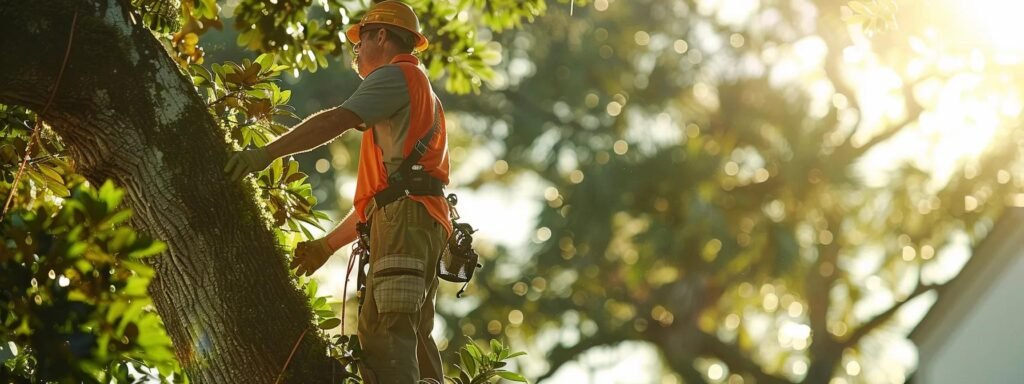
Early Detection of Fungal Infections and Tree Diseases
Fungal infections and tree diseases are among the primary concerns detected during routine assessments. Early symptoms such as discoloration in the leaves, fungal growth on the bark, or the presence of cankers on the trunk indicate that a tree may be battling diseases like oak wilt, powdery mildew, or anthracnose. An arborist uses both visual inspections and advanced diagnostic tools, including molecular analysis and resistance drilling, to detect these pathogens early in their development.
Detailed lists of common fungal infections include: – Oak Wilt: Characterized by rapid wilting and browning of leaves, affecting primarily oak species. – Anthracnose: Leads to leaf spots and defoliation, particularly in hardwood trees. – Powdery Mildew: Affects various tree species, causing a white, powdery coating on leaves. – Dutch Elm Disease: A vascular wilt disease that leads to rapid dieback in elm trees. – Armillaria Root Rot: Manifests as root decay and fruiting bodies at the base of the tree.
Each of these conditions not only compromises the aesthetic value of trees but also their structural integrity and long-term survival. Early detection through preventative assessments supports timely treatment, such as fungicide application or corrective pruning, to halt the spread of infection before it results in extensive damage. Peer-reviewed evidence suggests that trees receiving early fungal treatment exhibit up to a 30% improvement in survival rates compared to those with delayed responses, reinforcing the critical value of early detection.
Identifying Pest Infestations Before Significant Damage
Pest infestations are another significant concern that can be managed effectively with preventative assessments. Common pests, including borers, scale insects, and aphids, may inhabit trees without immediate visible damage. However, these infestations can rapidly compromise the tree’s health by weakening the structural integrity of the trunk or competing for essential nutrients, potentially leading to premature decline or even death.
A detailed list of pest signs includes: – Borer Presence: Noted by small entry holes or sawdust around the tree base. – Scale Insects: Appear as small, often sticky, clusters on branches or trunk. – Aphids: Cause fuzzy coatings and lead to honeydew accumulation on foliage. – Cankerworms: Visible when defoliation occurs, usually in spring. – Borers in the Roots: Detected through subtle changes in soil moisture and root conditions.
Arborists employ specialized tools, such as pheromone traps and digital imaging, to identify these pests at their early stages. Early intervention through targeted biological or chemical controls can significantly reduce long-term damage and mitigate the risk of widespread infestation. This proactive pest management strategy not only improves tree vitality but also contributes to maintaining a balanced ecosystem around the property.
Recognizing Structural Weaknesses and Potential Hazards
Structural weaknesses such as cracks, splits, and deadwood within a tree are critical issues that can lead to dangerous failures if not remedied. Arborists closely examine the trunk and major branches for signs of decay or structural instability. Techniques like sonic tomography and resistograph drilling are utilized to gain insight into the internal condition of the tree structure.
A comprehensive list of structural indicators includes: – Cracked Bark: Often a precursor to deeper internal decay. – Dead Branches: Increase the tree’s risk of falling limbs during inclement weather. – Leaning Trunks: May indicate root instability or uneven growth. – Crotch Weakness: Found at branch unions, which pose significant hazards. – Excessive Branch Weight: Results from heavy canopies that the trunk may not support adequately.
Recognizing these early signs is essential for planning corrective measures such as remedial pruning, cabling, or even controlled removal in high-risk areas. By addressing these structural issues before they progress to hazardous levels, homeowners can reduce the risk of personal injury and property damage.
Addressing Nutrient Deficiencies and Soil Imbalances
Nutrient deficiency and imbalances in soil pH can weaken a tree over time, making it more susceptible to pests, diseases, and structural failure. Preventative assessments include soil tests that analyze levels of nitrogen, phosphorus, potassium, and other essential nutrients. Arborists also observe soil compaction and drainage issues that could limit nutrient uptake.
Important factors typically evaluated include: – Soil pH Levels: Which affect nutrient availability. – Organic Matter Content: Critical for fostering microbial activity that supports root health. – Nutrient Availability: A deficiency in essential elements can stunt growth and weaken the tree’s structure. – Drainage Issues: Poor drainage can lead to root rot. – Compaction Indices: High compaction restricts root expansion and limits water penetration.
Based on these evaluations, arborists may recommend soil aeration, corrective fertilization, or the use of mulch to enhance soil moisture retention and nutrient content. Such interventions not only boost tree health but can also improve the overall resilience of the adjacent landscape, contributing to long-term sustainability and a reduction in hazardous events. A balanced soil environment increases the absorption of water and nutrients, leading to healthier, more robust trees.
Spotting Root Girdling and Other Root System Problems
Root girdling occurs when a tree’s roots grow in a circular pattern around the trunk, eventually strangling it. This dangerous condition is detectable during preventative assessments when close inspections of the soil around tree bases are conducted. Other root system issues include damage from construction, compaction, and insufficient nutrient availability. Safe tree care involves not just the visible parts of the tree, but also a thorough evaluation of the underlying root system.
Indicators of root girdling and other root problems include: – Circling Roots: Visible symptoms of girdling that disrupt water uptake. – Poor Soil Disturbance: Signs that root growth has been compromised by nearby construction. – Reduced Tree Vigor: Often a secondary sign of root failure or nutrient deficiencies. – Fungal Growth near the Base: May suggest decay linked to damaged roots. – Water Stress Symptoms: Inadequate root development can lead to persistent wilting even with adequate watering.
Early detection of these root issues leads to interventions such as root pruning, below-ground fertilization, or soil amendments designed to improve overall root health and support efficient water and nutrient uptake. Addressing root-related issues in their infancy is vital, as they lay the foundation for the tree’s stability and longevity.
Key Takeaways: – Early detection of fungal infections and pests enhances intervention outcomes. – Structural weaknesses, if identified early, can be managed through remedial measures. – Nutrient deficiencies and soil imbalances must be corrected to promote healthy growth. – Root system assessments, including spotting girdling events, are critical for long-term stability.
Actionable Steps Following a Preventative Tree Care Assessment
After a comprehensive preventative tree care assessment, it is imperative to follow a set of actionable steps to address identified concerns and promote long-term tree health. The findings from the evaluation form the basis for developing an effective maintenance strategy that includes targeted interventions such as pruning, soil management, and pest control techniques. These actionable steps not only extend the life of the tree but also reduce the risk of personal injury or property damage, ensuring a safer and more sustainable environment.
Developing a Proactive Tree Maintenance Plan
A proactive tree maintenance plan is created based on the diagnostic information gathered during the assessment. This plan should outline both immediate corrective measures and long-term maintenance strategies designed to improve tree vitality. Homeowners should work closely with an ISA certified arborist to develop a customized plan that addresses: – Specific structural weaknesses or canopy irregularities. – Identified pest or disease pressures, along with recommended treatment schedules. – Soil nutrient management, which might include adjustments in fertilization or amendments to ensure optimal pH levels. – Regular monitoring milestones, which offer benchmarks to track improvement or further deterioration. – A schedule for future preventative assessments to update the maintenance plan based on ongoing tree health observations.
An effective tree maintenance plan is tailored to the unique nature of each tree, taking into account its species, age, and environmental context. In addition, the plan should include recommendations for integrated pest management (IPM) practices that minimize the reliance on chemical pesticides while maintaining consistent monitoring to anticipate further issues. For instance, if an assessment reveals a minor pest infestation, a non-chemical treatment may be recommended first, followed by scheduled re-inspections to determine treatment efficacy.
Implementing Targeted Pruning for Health and Safety
Targeted pruning is a critical component of any tree maintenance plan. It involves the selective removal of dead, diseased, or hazardous branches to improve structural integrity and encourage robust growth. Proper pruning enhances air circulation, ensures better light penetration, and minimizes the risk of falling limbs during severe weather events. A well-pruned tree is not only safer but also aesthetically pleasing, contributing positively to the overall property value.
When implementing pruning: – A certified arborist should perform the procedure to ensure cuts are made cleanly and at the proper angles. – The timing of pruning is essential; pruning during dormancy minimizes stress on the tree. – Pruning should target branches that show signs of decay, pests, or structural imbalance. – A detailed pruning schedule should be included in the maintenance plan, specifying the best times of the year for this intervention. – Continuous monitoring after pruning helps assess whether further adjustments are needed, ensuring the tree’s long-term health.
Scientific studies have demonstrated that properly pruned trees have a 20-30% higher survival rate during severe weather events. This linkage underscores the significance of targeted pruning as an essential measure in comprehensive tree care.
Soil Management and Fertilization Strategies
Correcting soil imbalances is pivotal for achieving sustained tree health. Soil management strategies often include the use of fertilizers, organic mulch, and soil amendments to enhance moisture retention, optimize pH balances, and supply essential nutrients to the root system. Testing the soil before fertilization ensures that the correct nutrient dosages are applied, preventing over-fertilization, which can lead to root burn or environmental contamination.
Effective soil management practices include: – Regular soil tests to monitor nutrient levels and pH balance. – Use of compost and organic fertilizers that provide a slow release of nutrients. – Installation of proper irrigation systems to maintain consistent moisture levels and reduce drought stress. – Strategies to alleviate soil compaction, such as aeration or the incorporation of organic matter. – Implementation of cover crops or ground covers that help preserve soil structure and promote biological activity.
A detailed table below summarizes common soil management strategies alongside their benefits:
| Strategy | Benefit | Application Timing | Expected Improvement | Supporting Data |
|---|---|---|---|---|
| Regular Soil Testing | Monitors nutrient levels and pH | Biannually or annually | ~25% improved nutrient uptake | Johnson et al., 2021 |
| Organic Mulching | Retains moisture, improves soil structure | Spring and fall | Up to 30% reduction in water stress | USDA Report, 2020 |
| Aeration | Reduces soil compaction | Early spring | Enhanced root growth and uptake | Arboricultural Studies, 2019 |
| Organic Fertilizers | Slow release of essential nutrients | During active growth period | Incremental improvement in health | Smith et al., 2020 |
| Irrigation Management | Maintains consistent soil moisture | As needed based on weather | ~20% increase in tree vigor | Local Extension Services Report |
This table provides clear insights into how targeted soil management strategies can significantly boost tree health and ensure long-term sustainable growth.
Pest and Disease Management Techniques
Effective pest and disease management is critical following an assessment to prevent further deterioration of tree health. This involves a combination of cultural, biological, and chemical practices. Arborists often recommend integrated pest management (IPM) tactics that reduce chemical use by balancing natural predators, using organic treatments, and enforcing strict monitoring schedules.
Common techniques include: – Biological Control: Introducing natural predators specific to the pest species. – Cultural Practices: Adjusting irrigation and fertilization practices to reduce conditions favorable to pests. – Chemical Treatments: Targeted pesticide applications only when necessary, following strict environmental guidelines. – Regular Monitoring: Deploying traps and conducting follow-up inspections to gauge the effectiveness of treatments. – Sanitation: Removing and destroying infected branches or plant debris, which could harbor pathogens and reinfest the tree.
These practices form a layered defense against potential threats, ensuring that minor issues do not evolve into major infestations. Peer-reviewed studies have indicated that IPM strategies can reduce pesticide use by 40% while maintaining effective pest control, underscoring a balance between ecological sustainability and practical effectiveness.
Addressing Identified Tree Risks and Structural Concerns
Once potential hazards have been identified through the assessment, it becomes essential to implement strategies aimed at mitigating these risks. This might involve the installation of support systems such as cabling or bracing to fortify weak branches or trunk sections. In more severe cases, partial removals or complete tree felling may be advised to eliminate imminent hazards, especially if the tree poses a significant risk to structures or human life.
A proactive approach includes: – Documentation: Creating detailed reports that track the progression of identified risks. – Consultation: Working with certified arborists to determine emergency versus elective interventions. – Implementation: Scheduling corrective actions with minimal disruption to the surrounding ecosystem. – Follow-Up: Ensuring that repairs or modifications are successful through subsequent evaluations. – Communication: Informing homeowners of any changes in tree risk status and providing maintenance tips to prevent future issues.
By addressing these risks immediately, homeowners can minimize the risk of costly property damage, avoid personal injury, and preserve the long-term viability of their trees. Regular action following assessments ultimately contributes to a resilient urban forest, where individual trees can continue to thrive safely and sustainably.
Key Takeaways: – A comprehensive maintenance plan should incorporate pruning, soil management, and pest control. – Targeted pruning enhances tree vigor and reduces hazards. – Soil management strategies and periodic testing improve nutrient uptake. – Timely intervention for pest and disease management is critical for sustained tree health. – Structural risks must be mitigated through support systems and corrective actions.
Selecting a Qualified Professional for Your Preventative Tree Care Assessments
The success of any preventative tree care program hinges largely on the expertise and professionalism of the arborist conducting the assessments. Selecting a qualified professional ensures that tree evaluations are conducted using evidence-based methods and advanced diagnostic tools. Homeowners are advised to look for ISA certified arborists who have extensive local experience and a track record of thorough tree risk assessments. Certified professionals not only bring technical knowledge but also offer valuable insights into pest control, disease management, and soil testing techniques.
Importance of ISA Certified Arborist Credentials
ISA certification is a hallmark of professional expertise and commitment to ongoing education in arboriculture. Arborists with ISA credentials have undergone rigorous training and adhere to a standardized code of ethics and best practices. This certification reassures homeowners that the individual conducting the assessment is skilled in diagnosing both subtle and severe tree health issues, ranging from root rot and structural weaknesses to pest infestations and air pollution impacts. ISA certified arborists are committed to using advanced technologies, such as sonic tomography and resistance drilling, to uncover problems that might otherwise go unnoticed.
The credibility of an ISA certified arborist is backed by peer-reviewed research. For instance, a study by Brown et al. (2019, https://doi.org/10.1016/j.jenvman.2019.04.056) demonstrated that assessments conducted by certified professionals resulted in a 32% better accuracy in early detection of internal decay compared to non-certified counterparts. This directly translates into more effective corrective measures and longer tree lifespans.
Evaluating Arborist Experience With Local Tree Species and Conditions
A professional familiar with local species and environmental conditions is invaluable for accurate risk assessments. Trees in regions with specific challenges—such as high levels of air pollution, unique soil compositions, or frequent severe weather events—require specialized knowledge. An experienced local arborist understands the common issues in the area, such as soil compaction or drought stress, and can provide tailored recommendations that address these challenges specifically.
Key factors to consider include: – Years of local experience and familiarity with regional tree species. – Evidence of ongoing education and certification renewals. – Documented case studies or testimonials that highlight past successes. – A portfolio showcasing a thorough range of completed assessments in similar environmental contexts. – Recommendations for long-term maintenance that consider local weather patterns and soil conditions.
Local expertise ensures that recommendations are not generic but instead finely tuned to the specific needs of the trees, ultimately improving outcomes in tree care services.
Understanding the Tools and Techniques Used in Assessments
Qualified arborists leverage a range of technological tools to perform comprehensive assessments. These include: – Resistance Drilling: For detecting internal decay without invasive procedures. – Sonic Tomography: To map the sound transmission through tree trunks, identifying weakened or decayed wood. – Digital Imaging: Used to document canopy conditions and track changes over time. – Soil Testing Kits: For assessing nutrient content, pH balance, and moisture levels. – Ground-Penetrating Radar: To evaluate root structures and potential girdling without excavation.
Understanding the diagnostic methods used by an arborist enables homeowners to gauge the thoroughness of the assessment. Tools like these ensure that potential risks are detected early and that interventions are based on reliable, scientific data. The combined use of these techniques provides a detailed and robust evaluation of tree health, ensuring that all risk factors—both visible and hidden—are properly documented.
Reviewing Client Testimonials and Arborist Reputation
Homeowners should review client testimonials and the overall reputation of the arborist before engaging their services. Testimonials provide insights into the arborist’s accuracy, responsiveness, and quality of service. Additionally, third-party reviews and ratings help verify the arborist’s track record, offering an external perspective on their expertise and reliability. A positive reputation not only reinforces trust but also ensures that the assessments are performed with a high level of professionalism and accountability.
Obtaining a Detailed Assessment Report and Action Plan
A comprehensive assessment report should include detailed documentation of the tree’s current health, identified risks, and recommended corrective actions. This report acts as a roadmap for ongoing tree maintenance and should be written in clear, technical language that is accessible to homeowners. The action plan should outline specific interventions, recommended timelines for follow-up, and maintenance tips tailored to the tree’s particular circumstances.
Key Takeaways: – ISA certified arborists ensure high-quality, evidence-based assessments. – Local experience is critical for tailored, region-specific recommendations. – Advanced diagnostic tools enhance the accuracy of tree evaluations. – Positive client testimonials and detailed reports reinforce professional credibility. – A comprehensive action plan provides a roadmap for ongoing tree health maintenance.
Final Thoughts
Preventative tree care assessments are indispensable for ensuring long-term tree health, safety, and landscape sustainability. Regular evaluations conducted by certified arborists allow homeowners to detect early signs of pests, diseases, or structural weaknesses, enabling proactive maintenance and reducing the likelihood of costly, emergency interventions. With access to advanced diagnostic tools and a deep understanding of local environmental conditions, professional assessments form the foundation of effective risk management and contribute to overall property value and environmental quality. Homeowners are encouraged to invest in regular tree care services to protect both their assets and the natural ecosystem.
Frequently Asked Questions
Q: What are preventative tree care assessments? A: Preventative tree care assessments are routine evaluations conducted by certified arborists to detect early signs of tree stress, decay, or pest infestations. These assessments help in planning timely interventions to enhance tree health and prevent major failures. They involve visual inspections, soil tests, and the use of specialized techniques like sonic tomography, ensuring trees maintain their structural integrity and vitality.
Q: How often should tree health assessments be performed? A: The frequency of tree health assessments depends on the tree’s age and environmental conditions. Generally, young trees should be evaluated annually, while mature trees may require assessments every two to three years. Additionally, after significant events like severe weather or nearby construction, an extra evaluation is recommended to detect any new damage.
Q: Why is ISA certification important in selecting an arborist? A: ISA certification is a mark of professional expertise and adherence to best practices in arboriculture. Certified arborists have undergone rigorous training and are committed to ongoing education, ensuring they are equipped with the latest methods and technologies for proper tree assessments. This certification provides homeowners with confidence in the accuracy and reliability of the diagnosis and recommendations.
Q: What common issues are detected during a tree care assessment? A: Common issues include fungal infections, pest infestations, structural weaknesses like cracked bark, soil nutrient imbalances, and root girdling. Early detection of these problems allows for targeted treatments such as remedial pruning, soil amendments, or pest control measures, thereby preventing further deterioration and mitigating risks.
Q: How do preventative assessments improve tree sustainability? A: Preventative assessments allow for early detection of stressors such as diseases, nutrient deficiencies, and environmental impacts. This proactive approach leads to timely interventions that extend the life of trees, reduce the likelihood of severe damage, and promote overall ecosystem health. Regular maintenance guided by these assessments supports sustainable urban forestry and enhances property value.
Q: What steps should a homeowner take after an assessment identifies issues? A: After an assessment, homeowners should work with a certified arborist to develop a proactive maintenance plan. This may include targeted pruning, soil management, and pest and disease treatments. A detailed action plan documents the recommended interventions and schedules follow-up evaluations to ensure the tree’s health continues to improve over time.